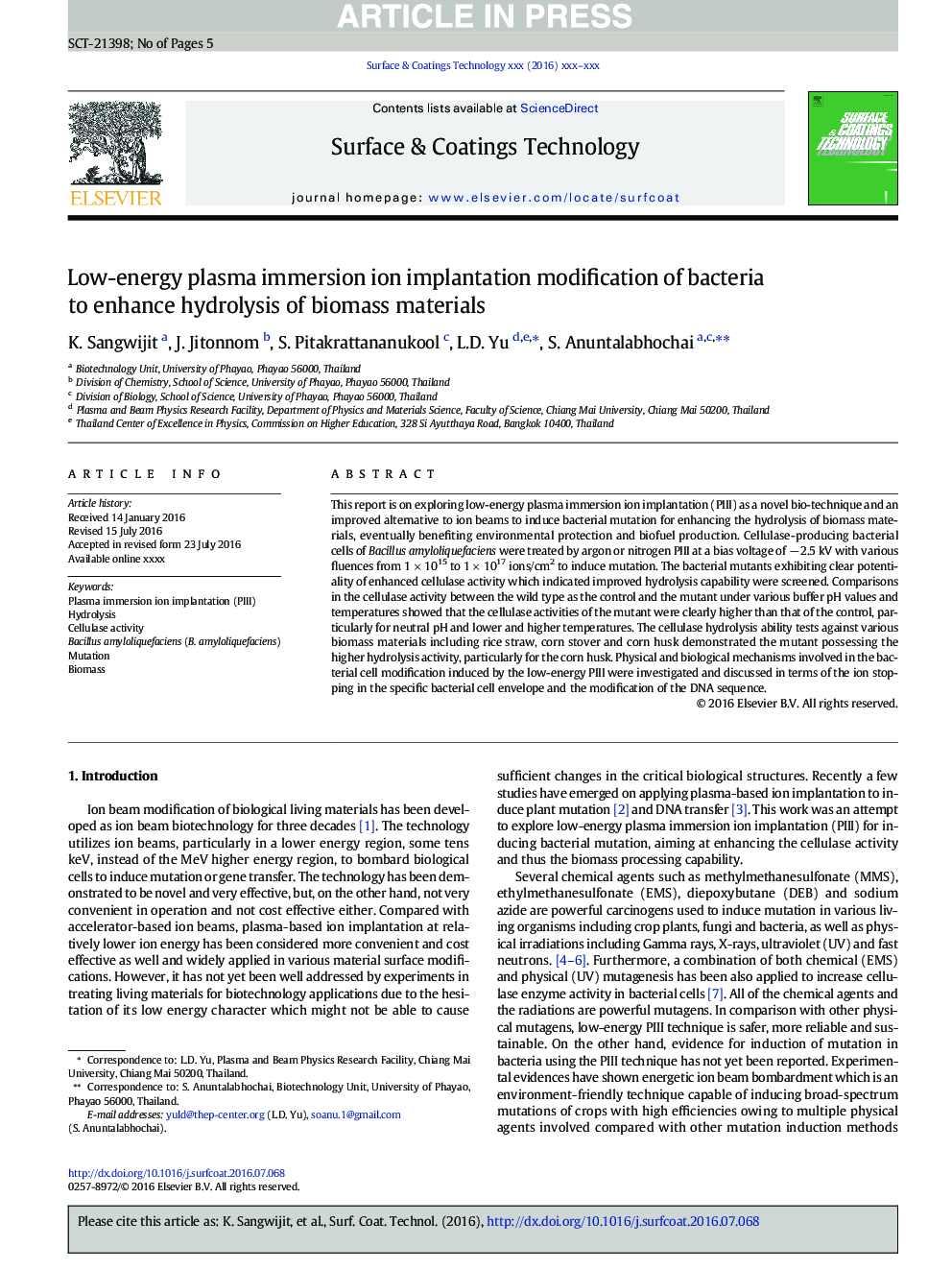| Article ID | Journal | Published Year | Pages | File Type |
|---|---|---|---|---|
| 5465220 | Surface and Coatings Technology | 2016 | 5 Pages |
Abstract
This report is on exploring low-energy plasma immersion ion implantation (PIII) as a novel bio-technique and an improved alternative to ion beams to induce bacterial mutation for enhancing the hydrolysis of biomass materials, eventually benefiting environmental protection and biofuel production. Cellulase-producing bacterial cells of Bacillus amyloliquefaciens were treated by argon or nitrogen PIII at a bias voltage of â 2.5 kV with various fluences from 1 Ã 1015 to 1 Ã 1017 ions/cm2 to induce mutation. The bacterial mutants exhibiting clear potentiality of enhanced cellulase activity which indicated improved hydrolysis capability were screened. Comparisons in the cellulase activity between the wild type as the control and the mutant under various buffer pH values and temperatures showed that the cellulase activities of the mutant were clearly higher than that of the control, particularly for neutral pH and lower and higher temperatures. The cellulase hydrolysis ability tests against various biomass materials including rice straw, corn stover and corn husk demonstrated the mutant possessing the higher hydrolysis activity, particularly for the corn husk. Physical and biological mechanisms involved in the bacterial cell modification induced by the low-energy PIII were investigated and discussed in terms of the ion stopping in the specific bacterial cell envelope and the modification of the DNA sequence.
Related Topics
Physical Sciences and Engineering
Materials Science
Nanotechnology
Authors
K. Sangwijit, J. Jitonnom, S. Pitakrattananukool, L.D. Yu, S. Anuntalabhochai,
